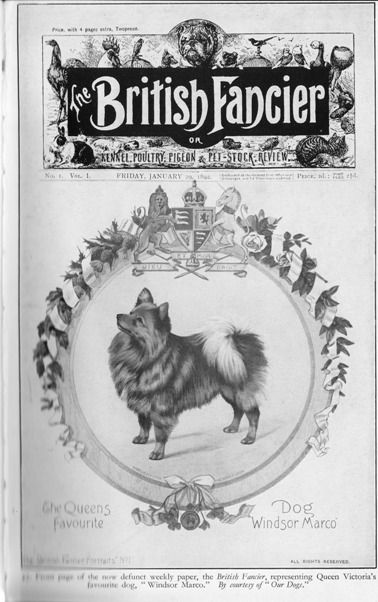Pre-1900's History
There are various sightings of spitz throughout the 14th Century (although the name 'spitz' was not used until later, in the 15th Century), on pottery, manuscripts and paintings.
Legend has it that a Viking ship foundered on the Friesland coast near Stavoren and all hands were drowned except one, a Chieftain’s son.
Accompanied by his dog, A Friesian fisherman named Wolfert, who was a Christian, rescued the invader and the two men and the dog set sail on Wolfert’s fishing boat. In the dead of night a fierce storm drove them south, deep into unknown waters, but they finally drifted to safety onto high ground. In gratitude for their deliverance. Wolfert and the Norseman built a small chapel, which they dedicated to St. Olav, Patron Saint of Mariners. Wolfert’s dog was witness to all this. Here the legend ends and history takes over.
In the course of time, a small fishing village came into being on the spot where Wolferts boat is supposed to have landed – the spot where the Amstel River flowed into the inland sea. A series of great storms during the 13th century widened and deepened nearby waters until it became the Zuider Zee. A dam was built across the river and the little town came to be known as Amstelredam, no known as the metropolis of Amsterdam.
The people of Amsterdam never forgot the legend or the dog. To carry a dog on a vessel was first considered a good omen and developed into a custom. In time the dog became part of the sea laws because it came to represent ownership. No one dared ransack a ship if a dog was on board.
The great seal of Amsterdam shows an ancient vessel with a dog, resembling the Keeshond that we now know, on its deck.
Since early times, most barges, farms and carts had a canine sentry to act as a guard for flocks and sometimes used to hunt skunks, usually a Keeshond or whatever name they was given in the various countries; Germany as "Wolfspitzen"; in France as "Chiens Loup"; in Italy as "Lupini"; and in Holland as "Keeshonden" - pronounced "kayz-hawnd-en," being the Dutch plural.
It is during the eighteenth century that the instances of the spitz seem to increase, probably due to the adoption of the breed as a mascot by the Dutch Patriot Party which was led by Cornelis de Gijselaar, Kees for short. The little dog who followed him everywhere was known as Kees. In Holland its popularity was short-lived, but in Britain it seemed to become something of a fashion accessory with several artists using the dog in their work, with the artist Gainsborough has depicting the spitz several times.
Historical events in the Netherlands in the late 1700s, combined with the breed’s popularity in that country, made the Keeshond internationally known in Europe. In about 1781, Holland was divided into two political factions: the Orangists (Conservatives) who supported the Prince of Orange as Governor of the Netherlands, and the rebellious patriots (or Keezen, as the pro-Orange men derisively referred to the people’s party members). Cornelius, de Gyselaar, who had one of these popular dogs as his constant companion, was a leader in the patriot’s revolt.
Remembering that “Kees” a nickname in the Netherlands for Cornelis or Cornelius it seems significant in regard to a basis for the breed’s name that “Kees” de Gyselaar’s “hond” became the emblem of the Dutch party.
It is believed that after suppression of the patriot’s rebellion, many Kees were done away with for fear that possession of the dogs would indicate affiliation with the defeated rebels. Thus this beautiful and popular breed paradoxically became the victim of its own fame. Although some barge captains and farmers retained their dogs and kept informal stud records for their own use, it was more than a century later before the Keeshond again came to public attention.
Because of their great popularity and historically political prominence in Holland in the 18th Century, the breed has become known as the "Dutch" Keeshond.
\
Sources:
‘My Life with Keeshonden’ by Gwendolen Wingfield Digby
‘The Keeshond’ by Alice Gateacre












